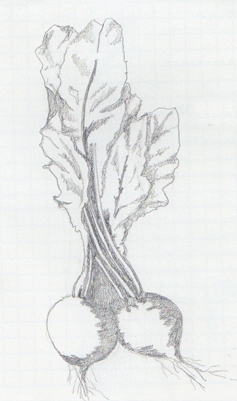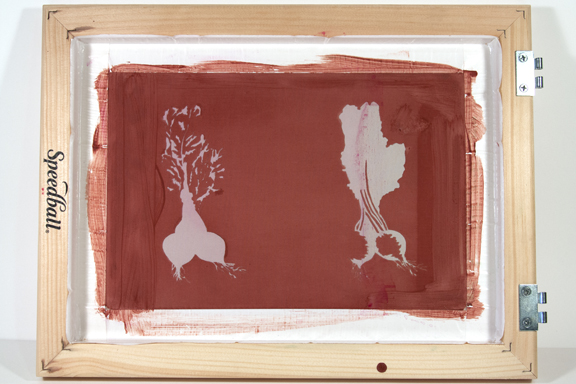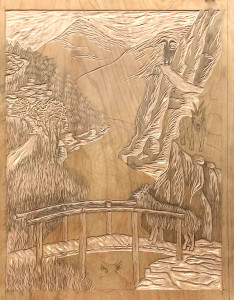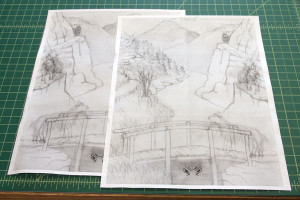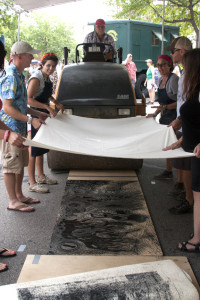There is great excitement when a new tool is purchased. The potential seems limitless and the enthusiasm for the new possibilities is intoxicating. This is why so many artists and craftsmen acquire so many tools. Getting a new tool is, to put it simply, awesome. I finally acquired a screen printing kit after a year of debating the purchase.
I had been first introduced to screen printing a few years ago in an Introduction to Printmaking course at IU, one of the greatest studio courses I have ever taken, thanks to the instructor. The image making process is straightforward and has so much potential. Screen printing can be done simply and cheaply with barely anything: sheer material, an embroidery hoop, glue and some paint. It can also be a highly worked print using multiple screens that build up color to make a complex design.
Of course, there is always the risk that the satisfaction of finally purchasing a pined over tool will leave you falsely satisfied, and the tool sits around unused. For this reason I was intent on quickly finding a subject matter to print that was simple, but also something that I would enjoy looking at throughout the relearning process.
So I turned to literature. After asking a friend for his suggestion of a fun and interesting novel to read, I was turned on to The Jitterbug Perfume by Tom Robbins. I had always heard of his novels but, until then, had never picked one up myself. To my delight, I finally read one and it was a really good read. It opens with a great introduction (at the bottom of this post) about the nature of beets and it is the beet that I decided to print.
I wanted to do a two color print of the beet, and the first step was to start with a drawing. I found an image of beets after a quick image search online. Since my tendency with sketching is to draw too much detail, I took the image into Photoshop, did a cut out filter and played with the settings until I achieved a simplified image that I could draw.
Next, I split the drawing up into two colors with some overlap for creating a “third” color. I used a frosted Mylar that allowed me to see how the green and red would overlap on top of one another. You could also use tracing paper, etc. Whatever you use, this is a great way to plan out your images. (click on thumbnails to enlarge)

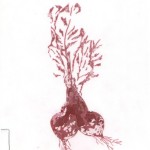
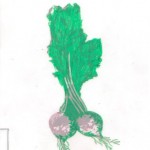
I have a screen that is about 10 x 14 inches and would accommodate both color runs on the same screen. It made registration a little bit more finicky, but it was nice so far as the filler was concerned. I was able to use drawing fluid to transfer both images to the screen then fill the whole screen.
When it came time to print, I just blocked off the side I wasn’t using with a piece of paper and masking tape. Below are the results of A Most Serious Vegetable. There are some imperfections, but it wasn’t a bad reintroduction.
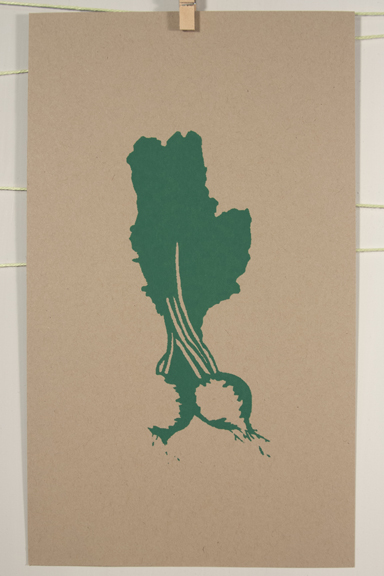
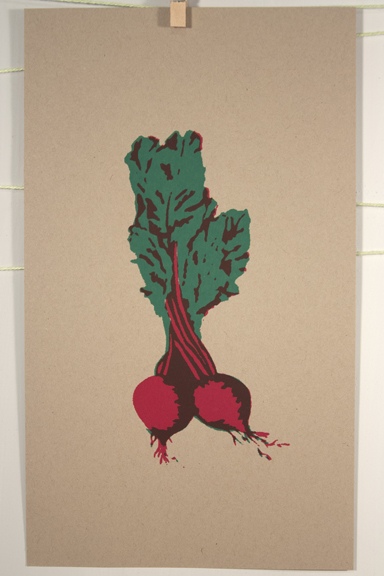
Slavic peoples get their physical characteristics from potatoes, their smoldering inquietude from radishes, their seriousness from beets.
The beet is the melancholy vegetable, the one most willing to suffer. You can’t squeeze blood out of a turnip…
The beet is the murderer returned to the scene of the crime. The beet is what happens when the cherry finishes with the carrot. The beet is the ancient ancestor of the autumn moon, bearded, buried, all but fossilized; the dark green sails of the grounded moon-boat stitched with veins of primordial plasma; the kite string that once connected the moon to the Earth now a muddy whisker drilling desperately for rubies.
The beet was Rasputin’s favorite vegetable. You could see it in his eyes.â€
― Tom Robbins, Jitterbug PerfumeÂ
